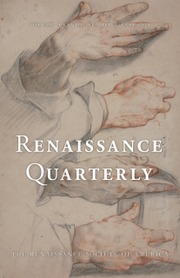There is nothing new in remarking that Chaucer’s English writings were influenced by Continental models. As has been well documented, Chaucer, like many other aspiring Plantagenet courtiers, was a well-traveled diplomat (Marion Turner, Chaucer: A European Life [2019]). Additionally, however, he was an especially keen observer of literary developments abroad. We have records of his visiting Italy twice in the 1370s, the decade when Petrarch and Boccaccio died, coincident with the widespread circulation of and subsequent vogue for their contributions to a pan-European literary culture. Chaucer’s works therefore continue to be addressed with reference to Dante, Boccaccio, and Petrarch (exemplarily by K. P. Clarke, “The Italian Tradition,” in Geoffrey Chaucer in Context, ed. Ian Johnson [2019]: 126–31). Helen Fulton’s edited collection is a welcome addition owing to its overarching concern with how Chaucer related to Italian auctoritas to advance and enrich his own literary output. This theme of “Chaucer’s supposed source of auctoritas” (71), in particular and more generally speaking, is treated by James Robinson in terms of “a haunted poetics” (49). And so, while Chaucer’s obvious indebtedness to Boccaccio rightly has preoccupied many source-hunting scholars early and late (e.g., Frederick M. Biggs, Chaucer’s “Decameron” and the Origin of the “Canterbury Tales” [2017]), there still is a need for a collection like Fulton’s, because each chapter brings forward new disclosures that help modern readers reassess Chaucer’s reception, transmission, and self-conscious reworking of his Continental source material.
Specifically, in the opening chapter William T. Rossiter puts paid to the claim that “Chaucer is the first English poet to represent the new diplomatic moment and its practices and make them part of the cultural legacy he bequeathed to his readers and poetic successors” (20–21). With reference to the times of plague and famine during Chaucer’s early life, James Robinson in chapter 2 considers the extent to which his experience of the “presence of loss and absence” left him “uniquely receptive to the ghostly dynamics of a trecento poetics in the works of Dante and Boccaccio which revolves around a form of textual haunting” (49–50). The editor’s own essay, chapter 3, interrogates “Chaucer’s use of chorography and its links to classicism and humanism” (91) to show how the vernacular writers of the fourteenth century—Chaucer included—successfully reconfigured “urban spaces as the products of commerce rather than Christianity” (114). The book’s middle chapters address visuality and visual theory of the period (Robert S. Sturges, in chapter 4) and the connection between astrology and governance (Andrew James Johnson, in chapter 5). In chapter 6, Victoria Flood traces the imperial eagle as symbol and motif to highlight Chaucer’s pastiche and parsing of his auctoritas, demonstrating a “reluctance to engage in the shared, and contested, imperial fantasies of Christian Europe” (186). In chapter 7, Leah Schwebel finds in the Monk’s Tale an association with the Trecento revival of the poetic triumph (written accounts of processions memorializing Roman triumphs, linked most notably to Ovid and Virgil). This essay thus emblematizes the volume’s stated mission and aim—namely, “to move beyond the ‘source and analogues’ approach…and to explore new perspectives and methodologies” with an eye toward how exactly “Chaucer, through his literary work, processed and re-mediated his contacts with Italian culture” (1).
This notion of remediation is a recurring motif of the volume, especially evident in chapter 7 with reference to Chaucer’s intertextual poetics; and in chapter 8, Teresa A. Kennedy’s perspicacious tracing of Chaucer’s journey from The House of Fame to the Nun’s Priest’s Tale to showcase Chaucer’s growing confidence, moving from imitation to invention, in his use of the vernacular. In all, these eight essays present readers with a range of specific ways that “Chaucer re-formed, transformed and used his Italian sources to create new and original texts that are not reducible to a set of adaptations and translations” (13). Chaucer and Italian Culture is an important book insofar as it situates Chaucer squarely within what we have come to think of as “the Renaissance,” as a circumspect writer alert to and participating in the protohumanist project of a Trecento vernacular literary scene.



